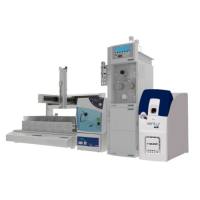The identification of drug metabolites in biofluids such as urine, plasma, and bile, as well as in in vitro systems, is an important step in drug discovery and development. Mass spectrometry, particularly when combined with high-performance liquid chromatography (HPLC-MS), can enable detailed structural information to be obtained on the metabolites of a drug or xenobiotic as a result of metabolism. The successful identification of drug metabolites by HPLC-MS-based techniques requires careful optimisation of a number of factors. First, the chromatographic separation should provide good resolution of the individual xenobiotic metabolites present in the sample. There is also the need to minimise the interference caused by the presence of endogenous metabolites, which may interfere with MS detection. Ideally, untreated samples should be profiled to reduce the likelihood of missing important metabolites due to losses during sample processing, but, depending upon the matrix, some degree of sample cleanup/extraction and concentration of the metabolites may be required using liquid–liquid or liquid–solid extraction. Second, the MS conditions must be carefully selected in order to maximise the potential of detecting the separated metabolites, which may have a very different character to the parent compound. The use of radiolabelled drugs in metabolism experiments greatly aids in the detection (and quantification) of metabolites, directing the investigator towards peaks that need to be characterised by MS. The presence of characteristic isotope patterns from either the incorporation of stable isotopes (e.g. 13 C, 15 N) or naturally occurring isotope patterns from substituents on the molecule (e.g. 35/37 Cl, 79/81 Br) can also provide a useful handle on the drug and its metabolites for the purposes of detection and spectrometric interpretation. This chapter provides guidelines for, and examples of, HPLC-MS-based drug metabolite profiling.






